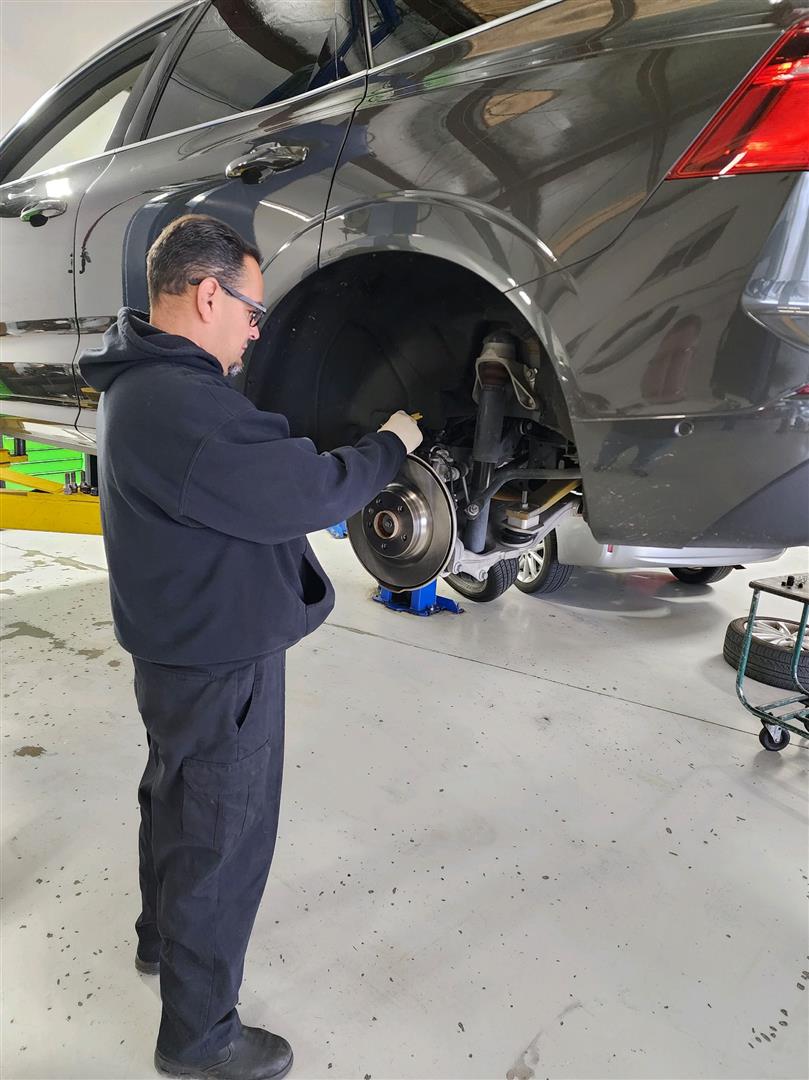 As you drive from day to day, pay attention to anything out of the ordinary and deal with it as soon as possible. Almost any problem will only get worse with time.
As you drive from day to day, pay attention to anything out of the ordinary and deal with it as soon as possible. Almost any problem will only get worse with time.
Simple and inexpensive procedures, like oil changes and tune-ups from an authorized technician, really can help your car last longer and prevent more serious and expensive problems.
"Check Engine" and "Malfunction Indicator" warning lights are often ignored.
This is the first sign of a problem. Also, your car won't pass smog with the check engine light on. Have your car checked by a qualified technician.
Your owner's manual will help you understand the gauges on your dashboard and will tell you what steps to take if the warning indicators light up. If you don't have a copy of your owner's manual, call us to get one ordered.
All fluids need to be flushed according to the manufacturer's specifications. Over time, the fluids can damage the lines and hoses that it runs through. It is more cost effective to replace the fluid than to replace all the lines, hoses and reservoirs.
Summer Check List
- Air Conditioner: Turn it on and let it run for a while. Is it blowing? Is it cold?
- Cooling System: Flush and refill the coolant system according to manufacturer’s specifications.
- Batteries and Cables: How old is your battery? Don’t get stranded.
- Brakes: Check brake lining. Flush brake fluid according to manufacturer’s specifications.
- Check Engine Light: Never leave on a trip with this light on. Have the problem diagnosed by a qualified technician before you leave.
- Windshield Wipers: Replace worn wipers. Although it’s summer, you may run into unforeseen weather when traveling.
- Tires: Check air pressure and tread wear.
- Lights: Test them to make sure they work, especially brake lights and turn signals.
- Pre-Trip Inspection: Consider having your vehicle inspected by a qualified technician, before your trip. Don’t wait until the last minute. Schedule 3 weeks before trip.
Winter Check List
- Cooling System: Flush and refill the coolant system according to manufacturer’s specifications.
- Windshield Wipers: Replace worn wipers.
- Tires: Check air pressure and tread wear.
- Lights: Properly functioning lights are crucial for driving in winter fog. Test them to make sure they work, especially brake lights and turn signals.
- Brakes: Check brake lining. Flush brake fluid according to manufacturer’s specifications.
- Heater and Defroster: have a professional inspect the entire heating system.
- Belts and Hoses: Check for cracks.
- Check Engine Light: This is the first sign of a problem. You won’t pass smog unless this is repaired.
- Pre-Trip Inspection: Consider having your vehicle inspected by a qualified technician before your trip. Don’t wait until the last minute. Schedule 3 weeks before.
What To Look For
Changes in your vehicle's performance
Has your engine performance noticeably decreased?
Is your fuel economy getting worse?
Do you constantly have to add water or oil?
Are belts or hoses wearing out faster than they should?
Unusual sounds, odors, leaks or smoke
Where in the vehicle do they come from?
Where do they happen?
While driving or at idle?
When the engine is cold or hot?
When you're accelerating? Braking? Turning?
Going a certain speed?
Problems in handling or braking
Do you feel vibrations in the steering column or the brake pedal?
Does the steering pull to the right or left?
Is your tire tread wearing unevenly?